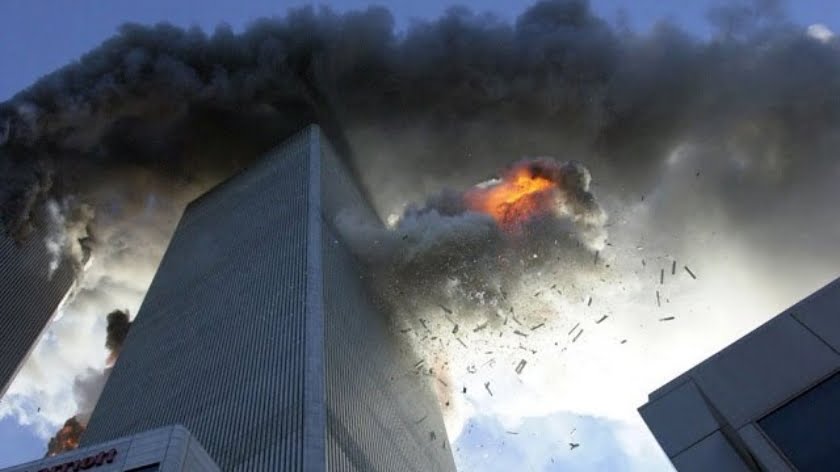Who and Why Exposes Civilian Planes to Air Defense Attacks?
On December 25, Israeli aviation once again launched a provocative airstrike from Lebanese airspace, using six of its F-16 aircrafts on targets near Damascus. The Israeli air force used 16 GBU-39 guided bombs, 14 of which were destroyed by Syrian air defenses.
However, the activation of the Syrian air defense system due to the provocative actions of Israel has triggered a threat to non-military objects in its area of operation, as well as to the airspace over Syria, causing a very dangerous situation for civil aircraft!
Despite the fact that Syria remains a hotspot, many passenger plane routes still pass through its airspace. In a deliberate disregard for the safety of civilian air traffic, the Israeli Air Force launched an air attack on December 25 as civilian airliners were approaching Beirut (Lebanon) and Damascus (Syria) airports.
It is worth noting that the IDF informed the pilots of the El Al aircraft from China to Tel Aviv in advance to change their course. The crew of the Israeli civilian jet, having considered the danger of the situation, changed course and took the plane out of range of Syrian air defense. According to The Times Of Israel, flight LY66 from Shanghai was instructed by air traffic controllers not to fly near the coast of Syria and Lebanon to avoid being hit by Syrian anti-aircraft batteries during an Israeli airstrike on Iranian targets in the Syrian province of Hama. Reportedly, the plane landed without incident at Ben-Gurion Airport at 1:40 AM on December 25. At about the same time, Syrian media reported an Israeli airstrike on Hama province.
However, the IDF “forgot” to inform other airlines, which were not carrying Israeli citizens at the time, about the air strike. In particular, Israel did not warn the Ethiopian Airlines civilian airliner flying to Beirut, so the civilian aircraft, unaware of the situation, not only entered the defenses’ range, but also failed to lower altitude, making it into a perfect target for anti-aircraft systems. It was only by sheer luck and thanks to the experience of the Syrian air defense operators that this time human casualties and a possible international scandal were avoided, had the Ethiopian Airlines plane carrying civilian passengers been shot down in Syrian airspace (which Israel had clearly hoped for).
Israel created a similar provocative situation in early 2020, when four Israeli F-16 fighter jets fired eight air-to-ground missiles without entering Syrian airspace and struck Damascus suburbs on February 6. The incident also occurred around 2 AM At the time of the strike, an Airbus-320 carrying 172 passengers on a flight from Tehran to Damascus was coming in for a landing near Damascus International Airport, and as such there were no Israeli citizens on the flight, similar to the Ethiopian Airlines flight on December 25. Only thanks to the prompt action of air traffic controllers at Damascus airport and the effective work of the automated air traffic control system did the Airbus-320 manage to escape from the range of the Syrian air defense and safely land at the nearest alternate airfield — the Russian Khmeimim air base — thus avoiding significant loss of life at the hands of Tel Aviv.
It is remarkable that such provocative air raids on Syria by the Israeli Air Force have become almost regular in recent years. Thus, on September 17, 2018, Tel Aviv was at fault for the tragic incident with the Russian Il-20 aircraft in Syria, which resulted in the death of 15 Russian citizens. Four F-16 fighter planes of the Israeli Air Force attacked Syrian targets with guided aerial bombs, deliberately using the IL-20 as a human shield. The Israeli fighters were approaching the target from the Mediterranean Sea, in other words, flying in the same direction as the Russian crew, only higher up and behind. When hiding behind the Russian aircraft, the Israeli pilots deliberately exposed it to fire from Syrian air defenses. As a result, the IL-20 was shot down by an S-200 missile. Moreover, the Israeli air controls and the pilots of the F-16 could not fail to see the Russian plane, as it was approaching from a height of five kilometers. Nevertheless, they deliberately went along with this provocation.
A similar provocative scheme to inflame tensions resulted in the tragic incident with a Ukrainian International Airlines (UIA) plane in Tehran on January 8, which killed 176 innocent passengers of the airliner. In addition to the condolences and sympathy expressed by Iranian President Hassan Rouhani and the officials of the Islamic Republic over the crash of the UIA plane, the Iranian side stressed that the tragedy in the sky over Tehran took place at a time of increased military preparedness, in light of the threats of missile attacks by the United States and the increased intensity of the US military aircraft missions near Iran’s borders. Therefore, the provocative actions of Iran’s enemies and their responsibility in this terrible catastrophe are quite evident.
It is also worth mentioning that such provocations with civilian airliners have recently become an increasingly clear instrument of the United States, Israel and their allies in unleashing hostile propaganda campaigns not only against Syria and Iran. One comes to this conclusion, in particular, when analyzing the situation with the crash of the Malaysia Airlines Boeing 777 over the territory of Donetsk region, which was carrying out a scheduled flight MH-17 on the route Amsterdam-Kuala Lumpur on July 17, 2014, killing all 298 people on board – 283 passengers and 15 crew members. The crash of flight MH-17 was the largest (by death toll) in aviation history, and the investigation by the Netherlands into its causes clearly demonstrates the desire of the West to use it to unleash another anti-Russian hysteria, although the available evidence does not allow it.
In this connection one involuntarily recalls the catastrophe of the Korean Air Lines (KAL) Boeing 747 flying the international route New York—Anchorage—Seoul over Sakhalin on September 1, 1983, which was obviously provoked by the USA. Despite the fact that its flight to Seoul was supposed to go over neutral waters of the Pacific Ocean, the plane, obviously with provocative intentions against the USSR, deviated to the right from its planned course to such an extent that it entered the closed airspace of the USSR, after which it was intercepted and then shot down by a Soviet fighter Su-15.
And, unfortunately, there are many more such examples that show that the supporters of tougher sanctions and instigation of new political and armed conflicts publicly disregard the safety of civilians and civilian air traffic in order to achieve their provocative goals. In their hands, civilian aircraft have long been a tool for unleashing conflict, which urgently requires an objective investigation by the international community and an international court, so that incidents like Israel’s recent actions in Syria are not repeated and do not threaten the peaceful skies.







